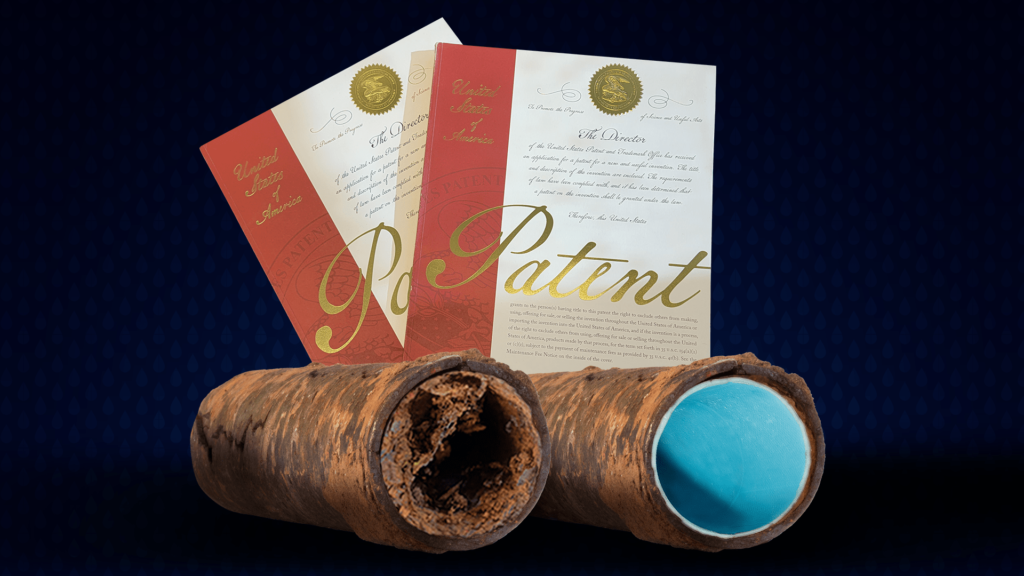Who cares about patents? If you’re thinking about lining small diameter pipe, you probably should. Patents aren’t just for bragging rights, they often indicate a better way of doing things, and in this case, they indicate a better way to tackle intricate, high-margin lining jobs.
It may sound like a stretch, but when lining small diameter sewer and drain pipes, patents matter. NuFlow’s patented pull-in-place liner assemblies are ideal for intricate, small diameter in-building pipe systems. Other techniques must avoid violating these patents, which can result in sub-standard approaches that may fail to navigate bends, leave gaps between the host pipe and the liner, or end with straight-up liner failure.
NuFlow’s patented pipe lining technology
There are three key elements to the NuFlow liner patent, all of which make NuFlow the preferred solution for intricate, small diameter pipes.
First is the malleable rubber bladder which stretches less along the inner radius of a bend than the outer radius, enabling full contact with the host pipe along the entire bend. As the liner assembly is inflated in a transitional area, the bladder not only stretches to accommodate the internal air pressure but conforms to the bends to ensure the resin-impregnated liner is moved into contact with all surfaces of the pipe bend. The inflatable bladder achieves this by allowing variable stretching, i.e., stretching less at the inside edge while stretching more at the outside edge of the bend to push all sections of the liner into full contact with the host pipe. Other systems that used woven nylon or vinyl bladder systems cannot achieve this variable stretching, making folds or creases in the cured liner, or annular space (air gaps between liner and host pipe) more likely. These possibilities are particularly problematic in small diameter pipes. The reduction and/or elimination of these creases results in better flow in the repaired section as well as a reduction in the likelihood of possible obstruction.
The second element is a strap that runs the length of the liner. The generally non-stretchable strap positioned longitudinally within the malleable inflatable bladder restricts the longitudinal expansion during positioning and inflation of the liner assembly within the pipe and prevents longitudinal over expansion of the bladder. This ensures that instead of the liner inflating down the length of the pipe, the pressure is constrained lengthwise and directed outwards, ensuring good contact with the host pipe wall.
Third, a pair of non-stretchable retaining sleeves for insertion into each end of a liner assembly prevents radial over expansion during inflation of the liner assembly. Ultimately, the inflated, resin-impregnated liner is constrained to the exact portion of the pipe requiring repair, while conforming as closely as possible to bends or transitions in the host pipe.
If an assembly is missing any part of the patented system (which competitors are) you can have issues with the liner navigating bends which can more likely result in annular space, or the dreaded “duck bill” fold in the finished liner. None of these are good for flow and can require cutting (and your time) to remove.
